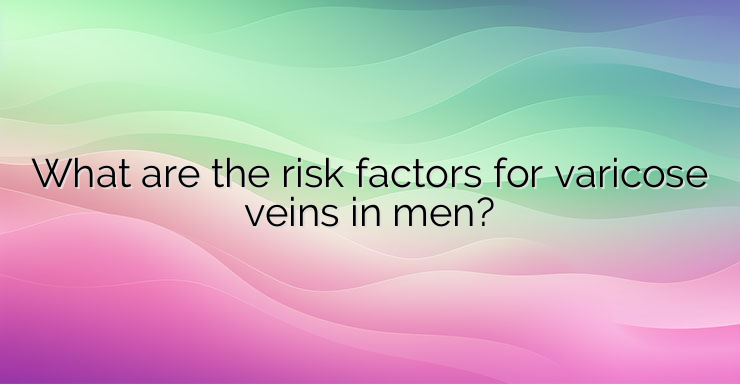What are varicose veins? Veins are the blood vessels that carry blood back to the heart from organs, muscles, and other tissues throughout the body. They have multiple valves (formations in the venous wall) that ensure the one-way flow of blood to the heart, without backflow through the vessel. Swollen and tortuous superficial veins are known as varicose veins (varicose veins) and can occur in both men and women. Varicose veins can lead to complications affecting blood circulation. Treatment, which may be done for cosmetic or health reasons, usually involves closing or removing the problem vein. Fortunately, the majority of treatments are minimally invasive outpatient procedures. What are the symptoms of varicose veins in men? Varicose veins are not a problem that only affects women. More than a quarter of men suffer from the pain and discomfort of swollen and varicose veins. The main symptoms of varicose veins in men are bulging veins, usually seen on the lower legs. Apart from their appearance, varicose veins often have no other symptoms. However, varicose veins can sometimes be accompanied by the following symptoms: Pain in the legs; Heaviness in the lower part of the legs; Itching; Night cramps; Swelling of the lower legs What are the causes of varicose veins in men? Varicose veins occur when there is too much pressure in the veins. This can happen when the valves of the vein or other parts of it weaken or have been injured. As a result, blood can begin to pool and cause the veins to swell. What are the risk factors for varicose veins in men? Varicose veins can affect men of all ages, but the risk increases with age due to loss of tone and muscle mass, as well as weakening of the vein walls. Certain factors can increase the risk of developing varicose veins. These include: Advancing age; Family history (case in the family) of varicose veins; Obesity; Sedentary way of life; Prolonged sitting or standing – work that requires spending a long time in a sitting or standing position can negatively affect blood flow; Smoking � chemicals in tobacco smoke can damage the structure and function of veins, increasing the risk of developing varicose veins. References: 1. De Oliveira R, et al. (2018). Foam sclerotherapy for lower-limb varicose veins: impact on saphenous vein diameter 2. Hager ES. Varicose veins 3. Raetz J, et al. (2019). Varicose veins: Diagnosis and treatment 4. Healthline. Do Men Get Varicose Veins?


Leave a Reply